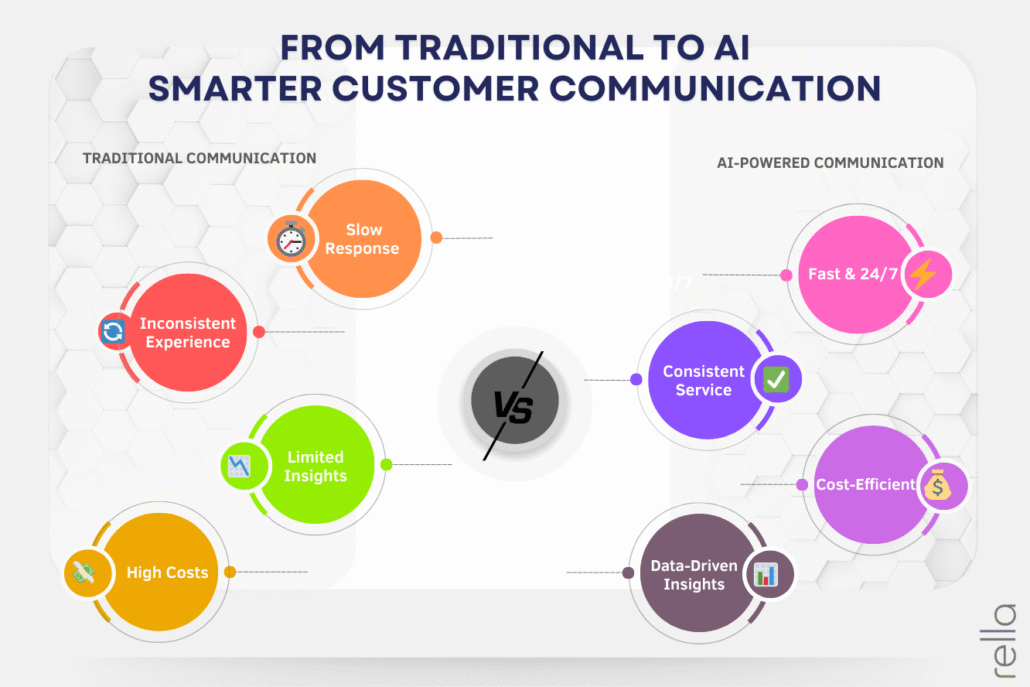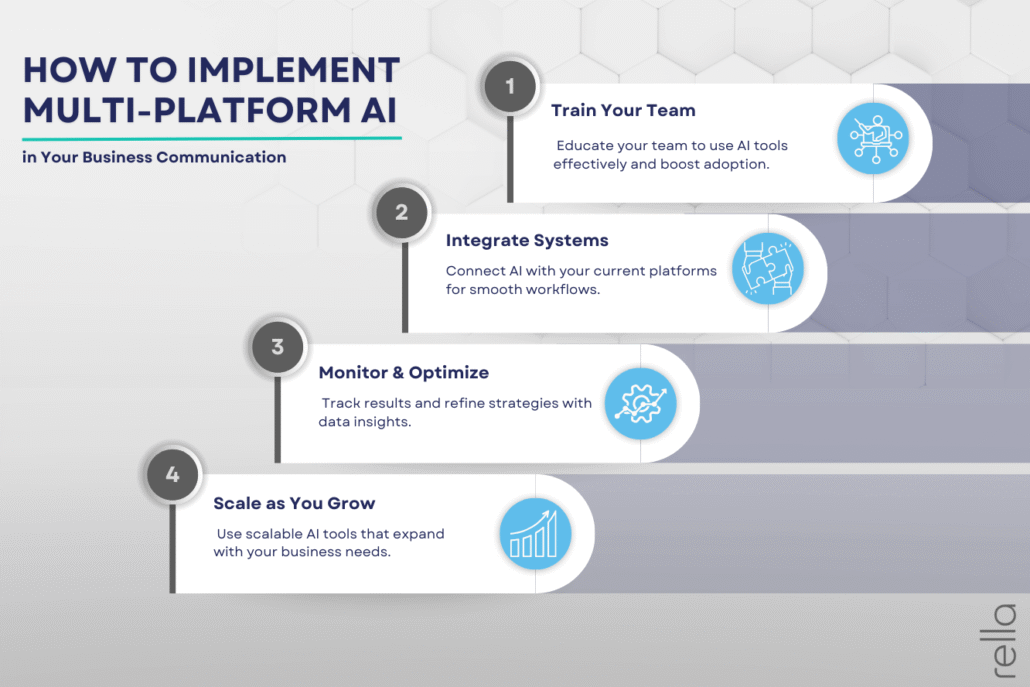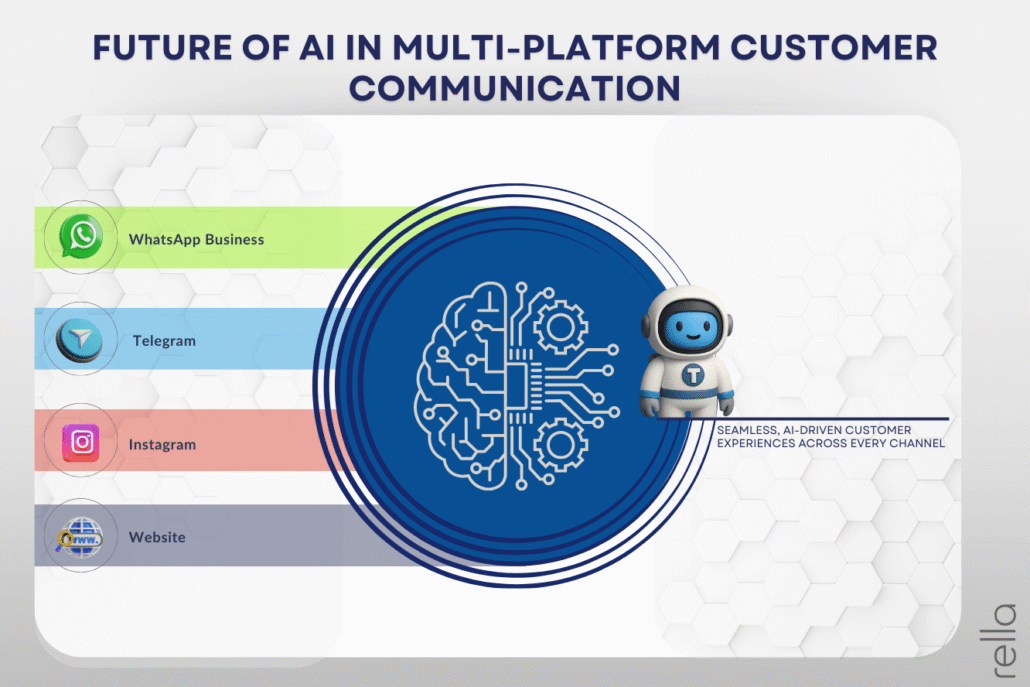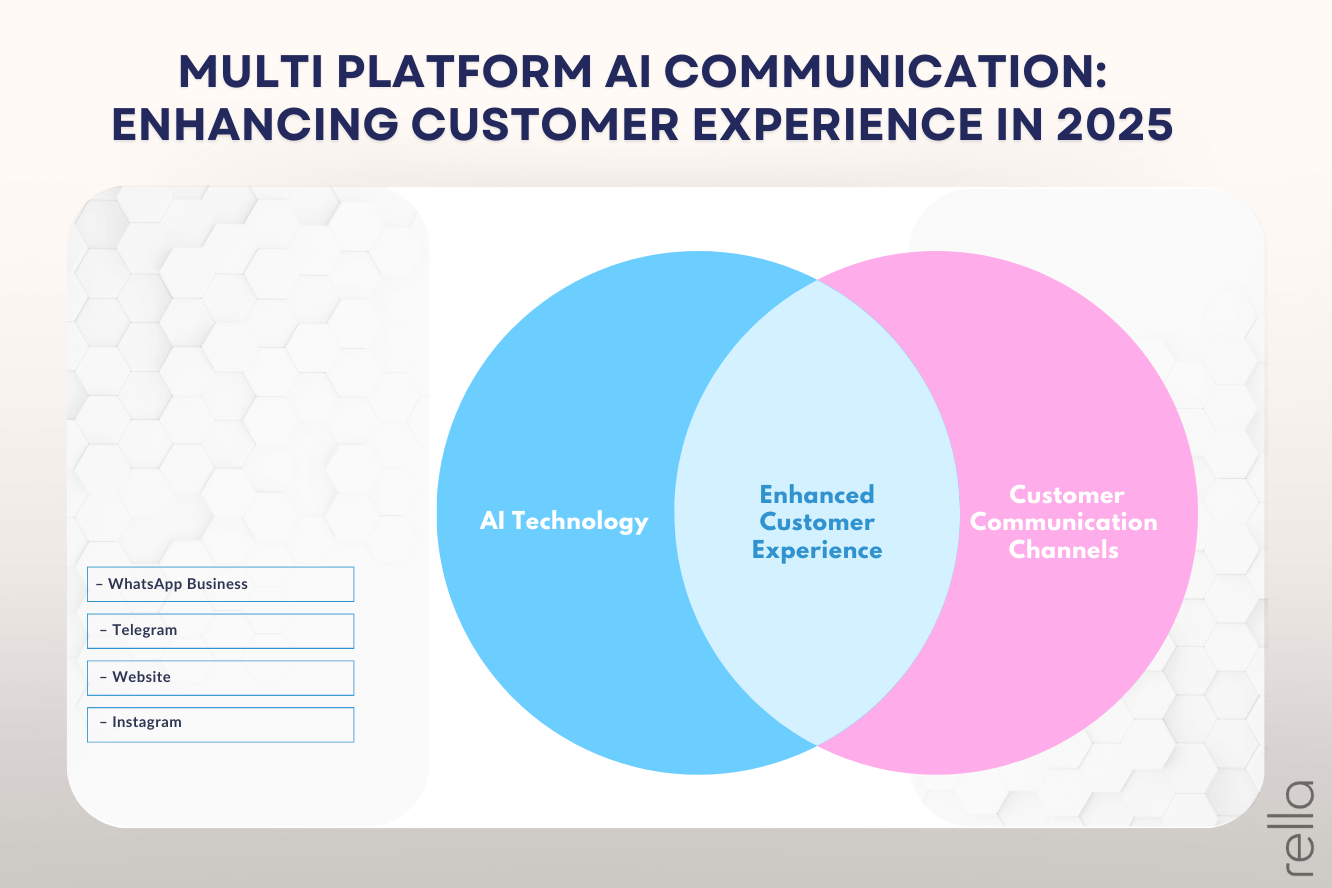In 2025, businesses are increasingly adopting AI powered solutions to manage customer communication across multiple platforms such as WhatsApp Business, Telegram, and websites. Traditional single channel communication can be slow, inconsistent, and difficult to manage, especially as businesses grow and customer expectations rise. Multi-platform AI enables companies to deliver timely, consistent, and personalized responses, enhancing the overall customer experience while streamlining internal workflows.
Platforms like Timo AI offer seamless integration across channels, allowing businesses to automate routine tasks, track interactions, and analyze customer behavior effectively. Adopting multi-platform AI communication is no longer optional; it has become essential for businesses aiming to stay competitive, improve customer satisfaction, and respond quickly to evolving market demands.
Challenges in Traditional Customer Communication
In today’s fast paced business environment, relying solely on traditional customer communication methods can create significant obstacles for companies. Many organizations face common challenges that affect both efficiency and customer satisfaction:
- Slow Response Times: Without AI tools, responding to customer inquiries across multiple platforms can be time consuming. Delays in replies often lead to frustrated customers and lost opportunities.
- Inconsistent Customer Experience: Managing communications manually across email, social media, and live chat may result in fragmented messages and a lack of coherence in customer interactions.
- High Operational Costs: Manual communication requires more human resources, which increases labor costs and reduces overall productivity.
- Limited Data-Driven Insights: Traditional methods often fail to provide actionable analytics on customer behavior, making it difficult for businesses to optimize their strategies and make informed decisions.
To overcome these challenges, modern AI powered platforms such as Timo AI offer solutions that integrate multiple communication channels, automate routine tasks, and provide insights to enhance both customer satisfaction and operational efficiency. By leveraging AI, businesses can ensure consistent, timely, and personalized communication across WhatsApp Business, Telegram, and websites, while reducing costs and improving overall team productivity.

How AI is Transforming Customer Interaction
Artificial intelligence is rapidly changing the way businesses communicate with their customers. By integrating AI-powered solutions, organizations can deliver faster, more personalized, and more efficient customer experiences. Key transformations include:
- Automated Responses: AI tools can instantly handle common customer inquiries, reducing wait times and freeing support teams to focus on more complex issues. Platforms like Timo AI automate responses across WhatsApp Business, Instagram, Telegram, and websites, ensuring that customers receive timely and consistent answers.
- Behavior Analysis: AI can track and analyze customer interactions across multiple channels, providing actionable insights. By understanding customer preferences, businesses can predict needs and tailor their communication strategies effectively.
- Personalized Messaging: AI enables businesses to deliver messages and recommendations based on individual customer data, enhancing engagement and fostering loyalty. Personalization increases the likelihood of repeat interactions and drives higher satisfaction rates.
By leveraging these AI capabilities, companies can transform traditional customer service into a proactive, intelligent system that improves efficiency, strengthens relationships, and drives growth.
Top AI Tools for Multi-Platform Communication in 2025
In 2025, businesses have access to a wide array of AI-powered tools designed to streamline communication across multiple platforms. Selecting the right tools can greatly enhance productivity, collaboration, and customer engagement. Here are some of the leading AI communication tools:
Zoom AI Companion
- Purpose: Automates scheduling, follow-ups, and meeting management.
- Features: AI-powered assistant for organizing virtual meetings, reminders, and handling common queries.
- Benefits: Reduces administrative workload and ensures smoother team collaboration.
Microsoft Teams AI Features
- Purpose: Unified communication and collaboration platform.
- Features: Messaging, file sharing, project management, video conferencing, and integrations with other business apps.
- Benefits: Centralizes team communication and improves productivity for both remote and in-office teams.
Grammarly AI
- Purpose: Enhances written communication quality.
- Features: AI-driven grammar correction, tone suggestions, clarity improvements, and context-aware writing feedback.
- Benefits: Ensures professional, clear, and effective communication in emails, reports, and messages.
Timo AI
- Purpose: Automated multi-platform communication and customer management.
- Features:
- Automated messaging and follow-ups
- Integration with multiple channels such as WhatsApp Business, Instagram, Telegram, and websites
- Dashboard for tracking conversations and analytics
- Benefits: Reduces response times, increases customer satisfaction, and streamlines communication workflows.
By combining these tools, businesses can create a seamless multi-platform communication ecosystem that supports both internal collaboration and external customer interactions. Implementing these solutions effectively allows companies to remain competitive, adapt to evolving business needs, and enhance overall operational efficiency.
How to Implement Multi-Platform AI Communication in Your Business
Adopting AI-powered communication tools is not just about choosing the right platform; it’s also about implementing them effectively. A thoughtful approach ensures that your business maximizes the benefits of automation and multi-platform communication.
Step 1: Train Your Team
Your employees need to understand how to use AI tools effectively. Offer hands on training sessions that cover basic usage, automation features, and how to manage customer interactions with AI assistance. By empowering your team, you ensure higher adoption rates and smoother operations.
Step 2: Integrate Systems Seamlessly
AI tools are most powerful when integrated with your existing systems. For example, solutions like Timo AI allow businesses to connect WhatsApp Business, Instagram, Telegram, and websites in one unified dashboard. This integration ensures that communication is consistent across all channels and prevents important customer messages from slipping through the cracks.
Step 3: Monitor and Optimize
The real strength of AI lies in its ability to provide actionable insights. Use analytics to track customer response times, engagement rates, and satisfaction levels. Regularly review these results to refine your strategy and adjust workflows. Businesses that continuously analyze and optimize their AI-driven communication strategies stay ahead of competitors.
Step 4: Scale as You Grow
Start small, then expand. Begin by automating common customer queries or basic internal tasks. As your business grows, you can scale AI implementation to handle more complex workflows, ensuring communication remains efficient and adaptable.

By following these steps, companies can create a scalable, efficient, and customer focused communication strategy. Businesses that act now will not only improve day to day operations but also future proof their communication systems in an increasingly AI driven world.
The Future of AI in Multi-Platform Customer Communication
The future of customer communication is undeniably AI driven. Businesses that adopt multi-platform AI tools today gain a strong competitive advantage, as they can deliver seamless, consistent, and personalized experiences across every channel. By automating routine interactions, analyzing customer behavior, and enabling real time engagement, AI not only reduces operational costs but also significantly improves customer satisfaction. Platforms like Timo AI highlight how businesses can unify communication across WhatsApp, Telegram, Instagram and websites, ensuring that no customer is left unattended. This type of smart integration will become the standard for companies looking to stay relevant in a digital first economy.

As AI continues to evolve, the gap between businesses that leverage these tools and those that don’t will only grow wider. Companies that prepare now with scalable, data driven AI communication strategies will be better positioned to adapt, innovate, and thrive in the years ahead.





